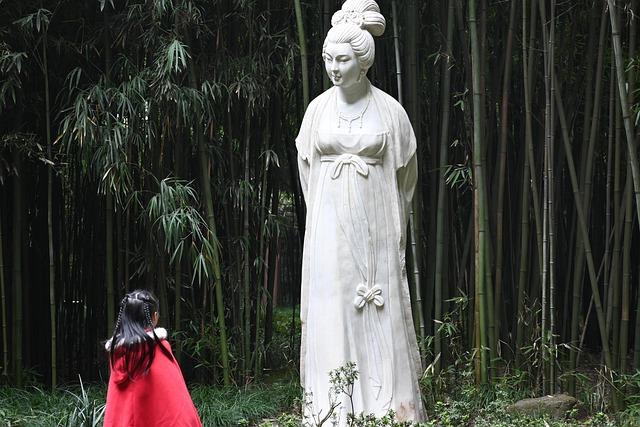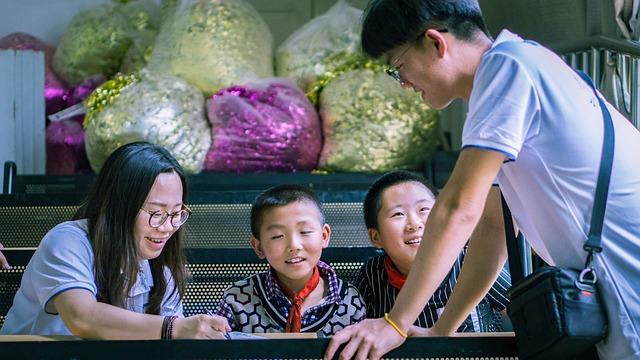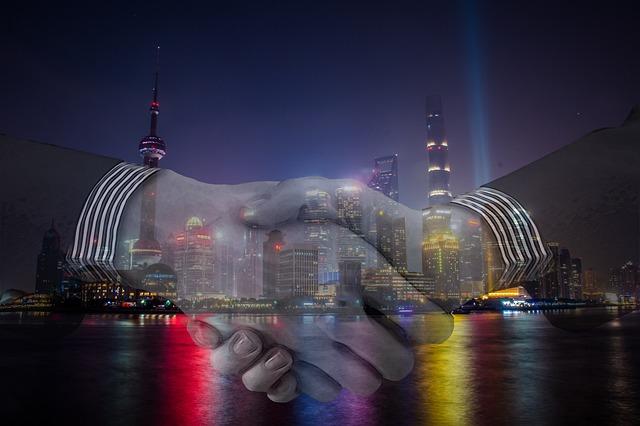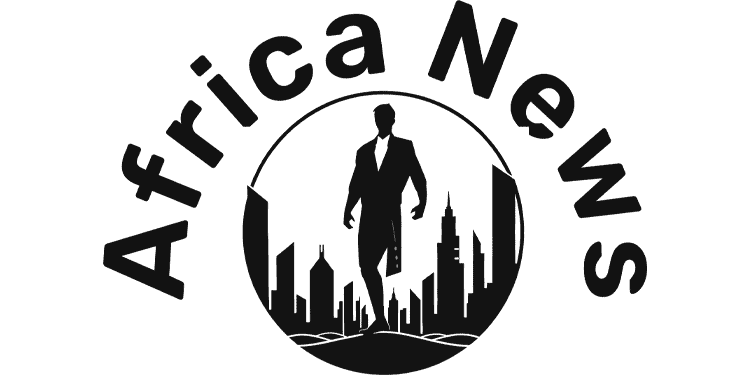In teh intricate landscape of post-conflict societies,the processes of transitional justice and reconciliation play a pivotal role in addressing past grievances and fostering sustainable peace. Ethiopia and Somalia, two neighboring horn of Africa nations with rich but tumultuous histories, stand at the crossroads of healing and justice. As both countries navigate the challenges of ethnic strife,political instability,and legacies of violence,the methods they employ too confront their pasts offer crucial lessons in the broader context of transitional justice. This article delves into the ongoing efforts and obstacles in ethiopia and Somalia, drawing insights from a recent discussion at the Wilson Center.By examining the intricacies of their reconciliation processes, we aim to illuminate the varied approaches to justice and healing that shape the future of these two nations.
Analyzing Historical Injustices in Ethiopia and somalia
The historical injustices faced by Ethiopia and Somalia have deep roots, stemming from colonial legacies, ethnic tensions, and decades of conflict.These circumstances have not only shaped the political landscapes of both nations but have also perpetuated cycles of violence and marginalization. In Ethiopia, the experience of ethnic federalism has created both opportunities for self-determination and challenges related to inter-ethnic competition, frequently enough leading to tensions that erupt into conflict. In Somalia, the civil war that began in the late 20th century resulted in a fragmented society, where various clans vie for power and resources, frequently enough to the detriment of national unity. The consequences of these historical injustices are palpable; they manifest in the form of social distrust,widespread displacement,and a persistent struggle for identity and recognition.
To address these legacies, both nations have initiated transitional justice mechanisms aimed at fostering reconciliation. Critical strategies include:
- Truth Commissions: established to uncover the realities of past atrocities and provide a platform for victims’ voices.
- reparations Programs: Aimed at compensating victims of violence and discrimination as a means of redressing historical wrongs.
- Community Dialog Initiatives: Encouraging grassroots engagement to rebuild trust among diverse ethnic groups.
Nevertheless, these processes encounter significant hurdles. Political resistance, inadequate funding, and a lack of popular support frequently enough inhibit progress. Moreover, the challenge of balancing justice with the need for political stability further complicates the successful implementation of these transitional justice measures. As Ethiopia and Somalia navigate their unique paths toward reconciliation, understanding the impact of their historical injustices remains essential in crafting a sustainable peace.

The Role of Inclusive Dialogue in Transitional Justice
In the contexts of Ethiopia and Somalia,inclusive dialogue emerges as a cornerstone of transitional justice,fostering a platform where diverse voices can be heard. This process encompasses not just the victims of conflict, but also perpetrators, community leaders, and marginalized groups, ensuring a holistic understanding of historical grievances. By promoting dialogue, societies can confront past injustices, articulate shared narratives, and work collaboratively toward a common future. The inclusion of various stakeholders facilitates trust-building and restorative justice, essential components for paving the way to long-lasting reconciliation.
Moreover, the practice of inclusive dialogue is instrumental in dismantling power imbalances that have historically shaped conflicts in both nations. Through these dialogues, the community can identify critical issues such as social inequality, ethnic tensions, and political disenfranchisement, which, if unaddressed, could lead to future conflicts. By systematically addressing these aspects in an open forum, transitional justice processes can achieve greater legitimacy and foster a culture of accountability. The table below outlines key benefits of inclusive dialogue in the context of transitional justice in Ethiopia and Somalia:
| Benefits | Description |
|---|---|
| Restorative Outcomes | Facilitates repair of relationships between communities by addressing grievances. |
| Empowerment | Gives a voice to marginalized groups, promoting social inclusion. |
| Understanding | Encourages recognition of multiple perspectives on historical events. |
| Accountability | Increases pressure on current and former leaders to address past wrongs. |

Strengthening Legal Frameworks to Support Reconciliation Efforts
In both Ethiopia and somalia, the journey towards achieving genuine reconciliation is significantly influenced by the robustness of national legal frameworks. To foster an habitat conducive to healing, it is essential that these frameworks not only address past injustices but also provide mechanisms for inclusive participation from affected communities. This includes establishing truth commissions, reparations programs, and accountability measures that can help restore dignity to victims while fostering a sense of collective responsibility. Governments should prioritize the alignment of national laws with international human rights standards, ensuring that the legal structures remain flexible and responsive to the realities faced by marginalized groups.
Moreover, the integration of local customary laws alongside formal legal systems can enhance the legitimacy and accessibility of justice processes. By doing so, stakeholders can build a more extensive approach to reconciliation that acknowledges the historical and social contexts of various communities. Effective training for judicial actors, local leaders, and civil society organizations in these dual systems is crucial to promote a holistic understanding of justice. Efforts should also focus on creating cross-border legal collaborations between Ethiopia and Somalia, as many communities straddle these nations, thereby emphasizing the need for coordinated approaches to transitional justice. The following table highlights key legal frameworks and their contributions to reconciliation in both countries:
| Legal Framework | Ethiopia | Somalia |
|---|---|---|
| Truth Commissions | Implemented to investigate past violations. | Proposed to address civil conflicts. |
| Reparations Programs | Designed for victims of political violence. | In discussion for conflict-affected communities. |
| Accountability Measures | Focus on systematic change in governance. | Encourages local justice initiatives. |

in Ethiopia and Somalia, community-led initiatives have emerged as vital components in the quest for reconciliation and justice. These grassroots movements encourage local engagement and participation, allowing residents to take ownership of the healing process. By focusing on collaborative dialogue and shared experiences, marginalized voices are amplified, fostering an environment where community members can address grievances and explore common ground.This approach not only builds trust within divided communities but also reinforces the notion that lasting peace is achievable through mutual understanding and empathy.
Examples of community-driven projects include local peace committees, restorative justice programs, and cultural activities that celebrate shared heritage. These initiatives often involve key elements such as:
- Inclusive participation: Engaging all community members, including women and youth, ensures diverse perspectives are acknowledged.
- Capacity building: Training community leaders in conflict resolution and negotiation techniques empowers them to facilitate discussions effectively.
- Networking opportunities: Creating platforms for inter-community collaboration helps bridge divides and fosters solidarity.
The success of these initiatives in both Ethiopia and Somalia suggests that when communities are equipped with the tools to engage in the reconciliation process, they can achieve transformative outcomes that make lasting peace possible.

International Cooperation and Support for Transitional Justice Mechanisms
International cooperation plays a pivotal role in reinforcing transitional justice mechanisms in Ethiopia and Somalia.Various global organizations and countries have recognized the need for collaborative efforts to support the establishment of sustainable frameworks that promote justice, accountability, and reconciliation. Such cooperation often takes the form of financial aid, technical expertise, and the sharing of best practices from countries that have successfully navigated similar challenges. Key elements of this support include:
- Capacity Building: Training local institutions and personnel to effectively manage transitional justice processes.
- Monitoring and Evaluation: Implementing systems to assess the impact and effectiveness of transitional justice initiatives.
- Public Awareness Campaigns: Educating communities about the importance of transitional justice in fostering peace.
In addition to bilateral agreements, the engagement of international bodies such as the United Nations and regional organizations like the African Union has been instrumental in promoting transitional justice. These entities often facilitate dialogue between conflicting parties, aiding in the design of inclusive mechanisms that cater to diverse societal needs. A table exemplifying the contributions of various international partners illustrates the collaborative spirit necessary for effective transitional justice:
| International Partner | Contribution type | Impact Area |
|---|---|---|
| United Nations | Technical Assistance | Capacity Building |
| European Union | Financial Support | Resource Allocation |
| African Union | mediation Services | Dialogue Facilitation |

Lessons Learned: Best Practices from Successful Reconciliation Models
Successful reconciliation efforts often emerge from a combination of carefully considered strategies and community engagement. One significant lesson learned is the importance of inclusive dialogue that encompasses a broad spectrum of societal voices. This includes involving marginalized groups — such as women, youth, and minority ethnic communities — in negotiations to ensure their perspectives shape the outcomes. Creating platforms for such dialogues fosters trust and ownership among the affected populations, which is critical for sustainable peace. Furthermore, transparency in the reconciliation process builds credibility, as communities are more likely to support initiatives when they see equitable procedures in action.
Another critical lesson is the necessity for context-specific solutions rather than applying a one-size-fits-all model.Each nation, like Ethiopia and Somalia, provides unique historical and cultural contexts that shape their reconciliation landscapes. Tailored approaches that respect these local narratives lead to more resonant and effective outcomes. Interdisciplinary collaboration involving various stakeholders — from government entities and NGOs to local community leaders — is vital for facilitating a more holistic understanding of reconciliation. The following table exemplifies some best practices derived from successful models in different contexts:
| Best practice | Description |
|---|---|
| Community Engagement | Involving local populations to promote trust and ownership. |
| Inclusive Dialogue | Ensuring representation from all societal segments. |
| Transparency | Maintaining open processes for accountability. |
| Contextual Approaches | Adapting models to fit local histories and cultures. |
| interdisciplinary Collaboration | Bringing various stakeholders together for a comprehensive perspective. |
The Conclusion
the exploration of transitional justice and reconciliation processes in Ethiopia and Somalia reveals the intricate tapestry of historical grievances, societal fractures, and the quest for sustainable peace in two nations with deeply intertwined yet distinct narratives. As both countries grapple with their respective pasts, the lessons learned from their experiences serve as a vital blueprint for future reconciliation efforts, not just in the Horn of africa but across the globe.
The Wilson CenterS examination underscores the importance of inclusive dialogue, historical acknowledgment, and the need for mechanisms that resonate with the aspirations of the affected communities. As Ethiopia and Somalia continue to navigate their paths toward healing, the emphasis on grassroots participation, accountability, and justice will be essential in fostering lasting peace and stability. The road ahead remains complex,yet the potential for transformative change lies in the commitment of both nations to confront their histories,engage with their citizens,and embrace a new chapter of collective resilience and unity.
As the international community observes and engages with these processes, it becomes increasingly clear that the journeys of Ethiopia and Somalia might not only redefine their own futures but also offer critical insights for other nations wrestling with the challenges of transition and reconciliation.
Source link : https://afric.news/2025/03/23/transitional-justice-and-reconciliation-processes-examining-ethiopia-and-somalia-wilson-center/
Author : Atticus Reed
Publish date : 2025-03-23 19:57:00
Copyright for syndicated content belongs to the linked Source.



